Kale, Avocado and Chia Seeds are Out: The Top Ten Superfoods of 2017
In case you haven’t heard, 2016 superfoods are, like, so last year. We’re well into 2017 and it’s time to update your superfood list and we here at MagicKitchen.com are here to help.
Through exhaustive and laborious research (don’t think I’ve ever done anything exhaustively and/or laboriously in my life) we’ve compiled a list of the ten most popular superfoods for 2017. Some we’re sure you’ve heard of before (watermelon seeds) and some, while having been around for all of eternity, are just having their nutritional values “discovered” (sumac, maringa & the alien sounding sacha inchi nuts).
Remember, this is just a superficial description of each, for more information, simply “Google” each one. And without further ado, here they are:
- Watermelon seeds – These things are on just about every superfood site I visited during my laborious and exhaustive research and each site claimed they will not sprout and grow in your tummy if eaten. They do, however,
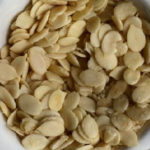 provide mad nutritional benefits if eaten only after they sprout (outside your stomach) and are shelled prior to being eaten. Not to worry, you don’t have to do that yourself as they can be purchased that way. As for their nutritional benefits, they offer ten grams of protein per ounce, and are chock full of vitamin B, magnesium and both monounsaturated and polyunsaturated fats.
provide mad nutritional benefits if eaten only after they sprout (outside your stomach) and are shelled prior to being eaten. Not to worry, you don’t have to do that yourself as they can be purchased that way. As for their nutritional benefits, they offer ten grams of protein per ounce, and are chock full of vitamin B, magnesium and both monounsaturated and polyunsaturated fats.
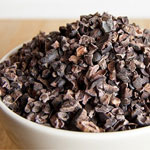 Raw cacao nibs – A synonym for “nibs” would be bits or pieces. Just think of this as chocolate without all the other stuff, especially sugar. Raw cacao contains numerous flavonoids which serve as an anti-inflammatory and support both the cardiovascular and nervous systems. Flavonoids also provide many fruits and veggies with their rich colors, such as the vibrant red of raspberries. Other nutrients contained within cacao include magnesium and riboflavin.
Raw cacao nibs – A synonym for “nibs” would be bits or pieces. Just think of this as chocolate without all the other stuff, especially sugar. Raw cacao contains numerous flavonoids which serve as an anti-inflammatory and support both the cardiovascular and nervous systems. Flavonoids also provide many fruits and veggies with their rich colors, such as the vibrant red of raspberries. Other nutrients contained within cacao include magnesium and riboflavin.
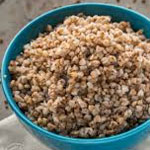 Buckwheat – No, not the lovable character from Our Gang/The Little Rascals that Eddie Murphy immortalized in Saturday Night Live skits from the 1980s, but the gluten-free flour substitute used to make pancakes, among other things. Buckwheat (there’s actually no wheat in buckwheat. It’s a fruit seed.) is a great source of vegetarian protein, dietary fiber, and manganese. It’s also been shown to help control blood sugar levels and protect against heart disease.
Buckwheat – No, not the lovable character from Our Gang/The Little Rascals that Eddie Murphy immortalized in Saturday Night Live skits from the 1980s, but the gluten-free flour substitute used to make pancakes, among other things. Buckwheat (there’s actually no wheat in buckwheat. It’s a fruit seed.) is a great source of vegetarian protein, dietary fiber, and manganese. It’s also been shown to help control blood sugar levels and protect against heart disease.
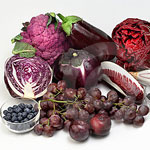 Purple Vegetables – And not just eggplants and beets, but corn, carrots, and asparagus too. Why? Well, it goes back to those antioxidants called flavonoids that provide these veggies with their color that the musician Prince (RIP) most certainly ate in large amounts. These flavonoids help lower the risk of high blood pressure, reduce inflammation and support brain health and since they’re also rich in vitamin A they support eye health as well.
Purple Vegetables – And not just eggplants and beets, but corn, carrots, and asparagus too. Why? Well, it goes back to those antioxidants called flavonoids that provide these veggies with their color that the musician Prince (RIP) most certainly ate in large amounts. These flavonoids help lower the risk of high blood pressure, reduce inflammation and support brain health and since they’re also rich in vitamin A they support eye health as well.
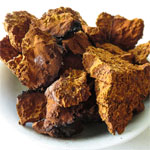 Chaga mushrooms – Usually found in dried or powder form, chaga isn’t a true mushroom, but a fungus that grows on birch trees…before you gross out, remember, all mushrooms are, technically, a fungus. Derived from the Russian word for “mushroom,” chaga contains over 200 phytonutrients and flavonoids that support the immune system. Other nutrients contained in chaga (which is often used to make tea or coffee) are B and D vitamins, riboflavin, niacin, calcium, and pantothenic acid.
Chaga mushrooms – Usually found in dried or powder form, chaga isn’t a true mushroom, but a fungus that grows on birch trees…before you gross out, remember, all mushrooms are, technically, a fungus. Derived from the Russian word for “mushroom,” chaga contains over 200 phytonutrients and flavonoids that support the immune system. Other nutrients contained in chaga (which is often used to make tea or coffee) are B and D vitamins, riboflavin, niacin, calcium, and pantothenic acid.
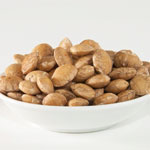
- Sacha inchi nuts – AKA Incan peanuts as they’re found in the Peruvian highlands. These plant seeds are a great source of omega-3 fatty acids, protein, and vitamins A and E. These nutrients have been shown to control blood glucose levels, lower LDL cholesterol levels and support brain and heart health.
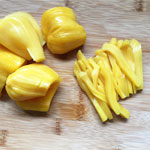 Jackfruit – As opposed to a jackass (sorry, couldn’t resist). The tropical, starchy, fibrous jackfruit is the largest fruit on the globe. A single jackfruit can weigh in at more than 100 pounds. It can be used by vegetarians, or even carnivores and omnivores for that matter, as a meat substitute (Mmmmm, jackfruit steak). It tends to absorb the flavor of what it’s cooked with and provides its consumer with various flavonoids, protein, potassium, fiber, vitamins B and A, and iron.
Jackfruit – As opposed to a jackass (sorry, couldn’t resist). The tropical, starchy, fibrous jackfruit is the largest fruit on the globe. A single jackfruit can weigh in at more than 100 pounds. It can be used by vegetarians, or even carnivores and omnivores for that matter, as a meat substitute (Mmmmm, jackfruit steak). It tends to absorb the flavor of what it’s cooked with and provides its consumer with various flavonoids, protein, potassium, fiber, vitamins B and A, and iron.
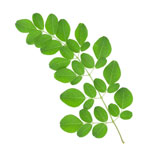 Maringa – The tiny leaves of the maringa tree, native to India but also found in Africa, Asia and South and Central America, are showing up in smoothies all over the Western world and with good reason. They are a very nutrient dense source of vitamins A, C, and E, calcium, protein, potassium and antioxidants that combat stress causing free radicals within the body.
Maringa – The tiny leaves of the maringa tree, native to India but also found in Africa, Asia and South and Central America, are showing up in smoothies all over the Western world and with good reason. They are a very nutrient dense source of vitamins A, C, and E, calcium, protein, potassium and antioxidants that combat stress causing free radicals within the body.
 Sumac – This Middle Eastern spice (not the “poison” version we deal with in the U.S.) has a tart and salty taste and has been found to be stuffed full of antioxidants and serves as a great salt substitute as well. These free radical neutralizing, anti-inflammatory antioxidants also promote heart health. Many simply sprinkle the red powder on their salads, pasta or rice, but others use it to flavor their meat and fish as well.
Sumac – This Middle Eastern spice (not the “poison” version we deal with in the U.S.) has a tart and salty taste and has been found to be stuffed full of antioxidants and serves as a great salt substitute as well. These free radical neutralizing, anti-inflammatory antioxidants also promote heart health. Many simply sprinkle the red powder on their salads, pasta or rice, but others use it to flavor their meat and fish as well.
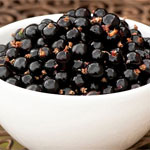 Black Currants – The tart berry, not a dark running river or stream of electricity…get it?…were once thought to spread a fungus that killed pine trees (that’s not the case). They’re most often used in jams, jellies, juices, and health drinks and contain what all the other foods on this list do…antioxidants, but they also possess vitamins C, A and E, gamma-linolenic acid, and anthocyanins. These nutrients help support healthy immune and cardiovascular systems.
Black Currants – The tart berry, not a dark running river or stream of electricity…get it?…were once thought to spread a fungus that killed pine trees (that’s not the case). They’re most often used in jams, jellies, juices, and health drinks and contain what all the other foods on this list do…antioxidants, but they also possess vitamins C, A and E, gamma-linolenic acid, and anthocyanins. These nutrients help support healthy immune and cardiovascular systems.
So, after writing this, I immediately made and consumed a purple carrot, black currant, maringa, sumac, buckwheat, raw cacao, sacha inchi nut, watermelon seed, chaga mushroom, and jackfruit smoothie and soon after developed the combined superpowers of the Hulk, Spiderman and Wonder Woman. Individual results may vary.
You must be logged in to post a comment.